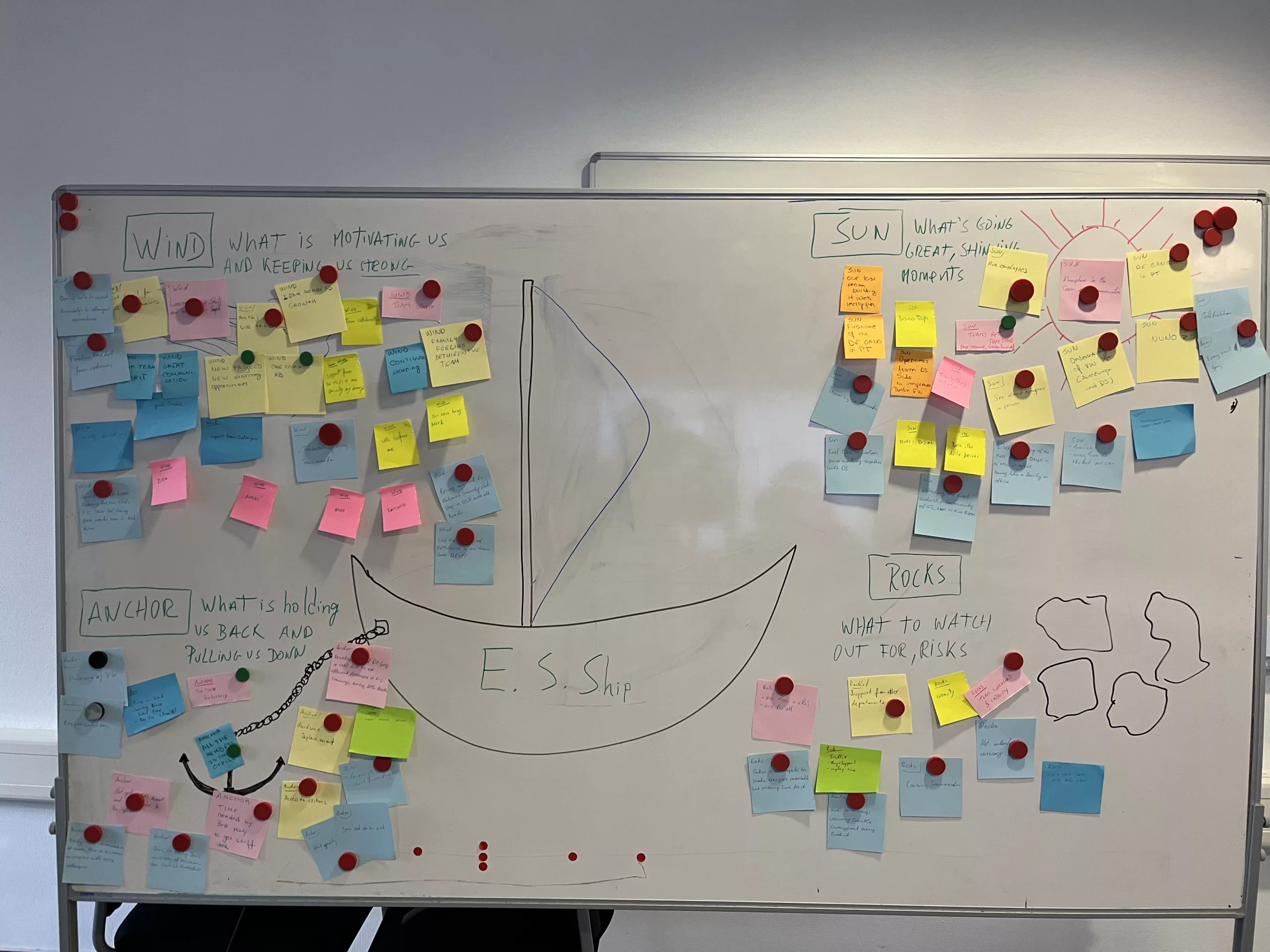Bringing Agile to IT Support Teams

This makes sense, Agile was originally designed as an alternative to the classic Waterfall methodology to help development teams build better software.
However, IT support teams face similar challenges that impact their ability to deliver more value to customers efficiently. As our teams struggled with these challenges, we realized the growing need for a structured methodology to guide us toward continuous improvement.
One of the biggest challenges we encountered was collaboration. While remote work offers great flexibility, we recognize that collaboration can sometimes be challenging. Poor collaboration resulted in knowledge gaps, keeping critical information isolated and reducing the team’s overall efficiency.
Another major challenge was visibility. Poor collaboration often resulted in an inability to recognize team efforts or track individual contributions. This lack of transparency affected team motivation and reduced engagement.
Lastly, heavy workload frequently tested our team’s resilience. Support teams naturally experience fluctuations in ticket volumes, and without structured processes in place, these peak periods led to a decrease in productivity and increase in stress levels.
Faced with these ongoing challenges, we recognized that we needed more than just temporary measures, we needed a methodology that would structure our workflows, enhance collaboration, and drive continuous improvement. This is where Agile framework began shaping our approach to IT support.
Adopting an Agile methodology:
The Agile framework embraces various methodologies. We started by exploring which one of these would make sense to implement on our teams.
Kanban1 was the method that better fitted our necessities. One of Kanban’s biggest advantages is its ability to make work visible through a board that tracks each task from start to finish. This helps teams understand their workload, identify challenges, and improve transparency.
Kanban in action: Implementation across two IT Support Teams:
1. Mapping the existing processes
Before implementing Kanban, the teams assessed all tasks and workflows to identify pain points and determine the best way to visualize work. This step was crucial in defining the appropriate Kanban board structure and ensuring it reflected all team activities.
2. Choosing the right tool: JIRA
After exploring various Agile project management tools, JIRA2 was selected primarily because of its flexibility in adapting to different workflows, the ease of setup and customization to fit the team’s needs and the availability of dashboards for tracking specific metrics.
3. Structuring the Kanban board
In one of our teams, giving a specific example, a Kanban board was created with five columns to represent the different stages of task progress:
- To Do – Tasks that have been identified but not yet started.
- In Progress – Tasks actively being worked on.
- Waiting for Support – Tasks requiring assistance from the vendor.
- Waiting for User – Tasks where the team is waiting for input or action from the end user or a specific team.
- Done – Completed tasks.
As a second example, in another team, the Kanban board was divided into 6 columns.
- To Do – Tasks that have been identified but not yet started.
- In Progress – Tasks actively being worked on.
- Waiting for L1 Team – Tasks where the team is waiting for input or action from a L1 team.
- Waiting for L3 Team – Tasks where the team is waiting for input or action from a L3 team.
- Waiting for others – Tasks where the team is waiting for input or action from the end user or a specific team.
- Waiting for Approval – Tasks where the team is waiting for validation on a specific topic.
- Done – Completed tasks.
For every team, the Backlog was used as a “parking lot” for tasks to be refined before going through the normal workflow of the Kanban Board.
These different structures ensured that every task had a clear status and that delays due to dependencies on users or other teams, were easily visible and measurable.
4. Defining issue types for clear categorization
To better organize and prioritize work, one of the teams defined three distinct issue types:
- Epic – Used for large projects or aggregators that include multiple related tasks.
- Improvement – Assigned to tasks focused on strengthening the team’s processes.
- Task – Applied to individual, routine or ad hoc tasks.
On another team, even though they used the same issue types, they also used Releases and Calendar to keep track of all scheduled tasks to be performed in the future.
5. Implementing components for better task identification
To further increase visibility, the Components were introduced in JIRA to tag tasks based on the technologies involved. This allowed team members to quickly identify which systems, tools, companies or applications were being worked on, making it easier to assign tasks.
These components played also an important role in identifying specific metrics, such as number of tasks performed on a specific technology, group companies or even number of meetings to better track time spend in these activities.
7. Enhancing daily meetings with quick filters
To simplify daily meetings and ensure quick access to relevant tasks, quick filters were added to the Kanban board, which started to be included in our daily meetings routine. Each team member had a dedicated filter, allowing them to instantly view their assigned tasks and discuss progress more efficiently during meetings.
Overcoming Resistance and Challenges
Implementing Kanban in IT support teams comes with its challenges. While the framework offers benefits, it also introduces changes that can cause some resistance within the team. Overcoming these obstacles requires clear communication, gradual adaptation, and ongoing support to ensure a successful adoption.
1. Increased effort in daily work
- Team members feel that creating Kanban cards is extra effort. The growing need of having everything documented was a major change in everyone’s daily tasks.
- Concerns about increased administrative workload, instead of focusing on technical tasks.
- Resistance to learning a new tool.
2. Forgetting to register work in JIRA
- Lack of habit or routine in updating tasks.
- Lack of commitment to new working methodologies.
3. Skepticism about Kanban’s effectiveness
- Doubts about Kanban’s relevance for IT Support teams.
- Limited understanding of the methodology and its benefits.
- Perception that Kanban benefits management rather than the team.
Our strategy to overcome these obstacles:
- Make the Kanban board a central part of daily meetings.
- Use dashboards and reports to demonstrate impact of Kanban on workload management.
- Implement automation to reduce manual efforts.
- Regularly refining processes based on feedback.
- Share success stories from other teams.
- Provide hands-on training and workshops to improve familiarity with JIRA.
- Conduct retrospectives to analyze challenges and opportunities, creating action points for improvement.
- Have leadership actively support the use of Kanban.
Main Insights
The implementation of Kanban in these 2 IT support teams led to improved visibility, better task organization, and more collaboration.
By centralizing knowledge and using dashboards, these teams have now real time insights regarding progress and workload distribution.
Additionally, Kanban provided a structured approach to managing all tasks and projects, improving productivity. Communication within teams improved as Kanban is now a shared workspace, allowing for better coordination and alignment. The ability to analyze workload distribution continues to help prevent high levels of stress and burnout, ensuring a balanced workload among team members.
Ultimately, by integrating Kanban effectively, it promotes a culture of continuous improvement, making IT support teams more agile, responsive, and efficient.





